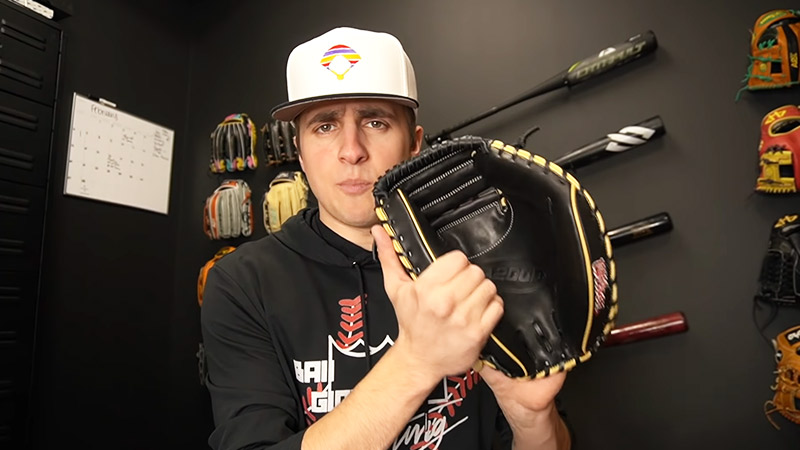A catcher’s glove is a vital piece of equipment for baseball players in the position of catcher. To perform at their best, catchers need a glove that is not only comfortable and well-fitting but also properly broken in to ensure optimal performance on the field.
Breaking in a catcher’s glove involves a series of steps and techniques that mold the glove to the player’s hand, creating a secure and functional pocket for catching balls.
This guide aims to provide valuable insights and instructions on the proper techniques and practices for breaking in, using, and caring for a catcher’s glove to help catchers excel in their role behind the plate. So, Let’s dig into it.
How To Break In A Catcher Glove?
There are some steps to follow if you want to break in a catcher glove set properly. Check out the following parts with proper care.
Step 1: Selecting the Right Catcher’s Glove
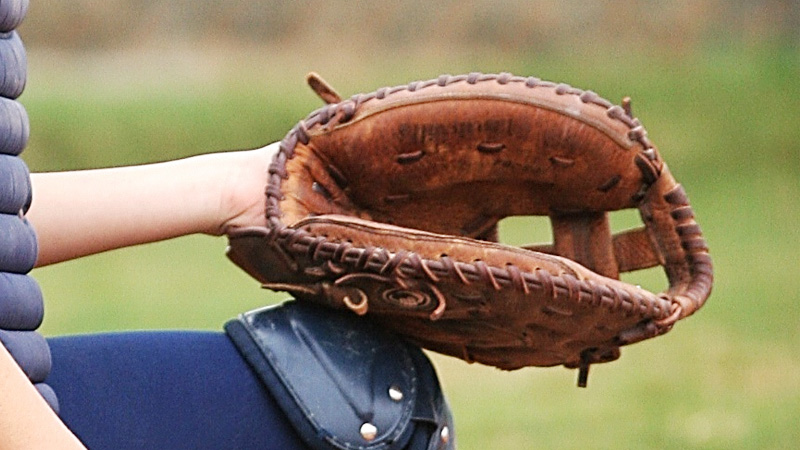
When selecting a catcher’s glove, it’s crucial to choose one that meets your specific requirements. Consider the following factors:
- Size: Catcher’s gloves are typically larger than gloves used by other positions. Look for a size that fits comfortably on your hand while providing enough coverage to handle incoming pitches and protect your hand.
- Webbing: Catcher’s gloves come in different web designs, including two-piece, one-piece, and modified trapeze. Each webbing style offers advantages in terms of visibility, control, and ball retention. Experiment with different styles to find the one that works best for you.
- Padding: Catching pitches can subject your hand to significant impact. Look for gloves with ample padding in the palm and backhand areas to absorb shock and protect your hand from stinging or bruising.
- Materials: Most catcher gloves are made of leather, but the quality of leather can vary. Premium-grade leathers are typically more durable and offer better flexibility. Synthetic materials may also be an option, offering affordability and ease of maintenance.
A well-fitting catcher’s glove is essential for optimal performance and comfort on the field. Here’s why:
- Control: A glove that fits properly allows you to have better control over the ball. It ensures that your hand is properly aligned with the glove, enabling you to make quick and accurate transfers when throwing or receiving pitches.
- Comfort: Wearing a glove that is too tight or too loose can cause discomfort and hinder your ability to perform at your best. A properly fitted glove should feel snug but not restrict movement or cause discomfort during extended use.
- Protection: Catching involves handling high-velocity pitches, and a properly fitted glove helps protect your hand from impact and potential injuries. It ensures that your hand is well-positioned within the glove, minimizing the risk of ball-to-hand contact.
- Hand strength and dexterity: A well-fitting glove allows for better hand strength and dexterity, enabling you to make quick and precise movements while catching, throwing, and blocking pitches. This can significantly improve your overall performance behind the plate.
Selecting a high-quality catcher’s glove that fits properly is crucial for optimal performance and comfort.
Consider the size, webbing, padding, and materials of the glove to find the right one for your needs. A well-fitted glove enhances control, comfort, protection, and hand dexterity, allowing you to excel in your role as a catcher.
Step 2: Choosing the Right Glove Conditioner
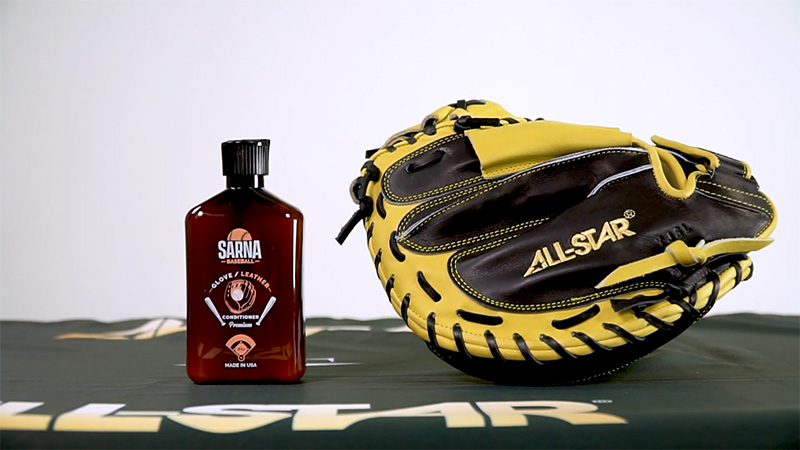
To apply glove conditioners properly you should keep the following things in mind. Check some of them out below.
Glove oil
Glove oil is a popular choice for conditioning catcher gloves. It helps soften the leather and prevents it from drying out. Glove oil also enhances the glove’s flexibility and extends its lifespan.
Leather Conditioner
Leather conditioners are specifically designed for leather gloves. They nourish the leather, keeping it supple and preventing cracking or stiffness. Leather conditioners often contain moisturizing agents that penetrate the leather, restoring its natural oils.
Mink Oil
Mink oil is another option for conditioning catcher gloves. It provides deep conditioning, making the leather more pliable and resistant to water. Mink oil also helps maintain the integrity of the leather and prolongs its durability.
Step 3: Apply Conditioner Regularly
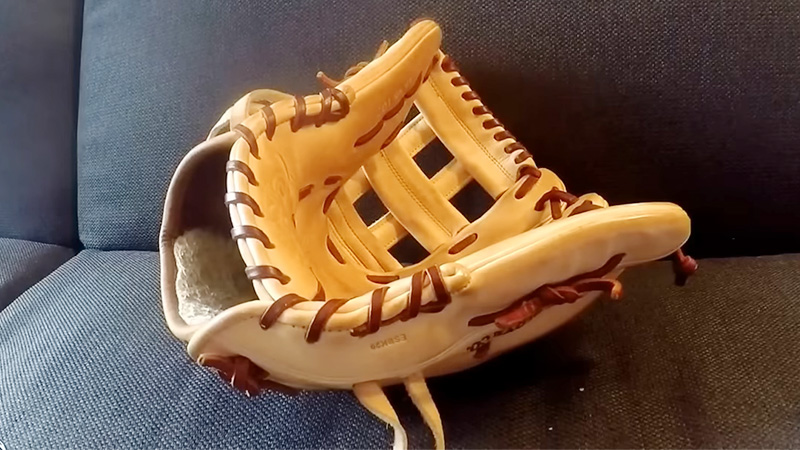
To ensure effective conditioning and optimal results, follow these steps when applying conditioner to your catcher’s glove:
- Clean the glove: Before applying any conditioner, clean the glove to remove any dirt or debris. Use a damp cloth or leather cleaner specifically formulated for gloves. Allow the glove to dry completely before proceeding.
- Apply a small amount: Start by applying a small amount of conditioner to a clean cloth or your fingertips. Avoid pouring the conditioner directly onto the glove, as it can saturate the leather and affect its performance.
- Rub in the conditioner: Gently rub the conditioner onto the glove, focusing on the areas that require softening or additional flexibility. Work the conditioner into the leather using circular motions, ensuring thorough coverage.
- Let it absorb: After applying the conditioner, allow it to absorb into the leather. This process may take several hours or overnight. Avoid using the glove immediately after applying the conditioner to allow the leather to fully absorb the conditioning agents.
How Conditioner Helps Soften the Leather and Improve Flexibility
Conditioners contain oils and moisturizing agents that penetrate the leather, providing several benefits to your catcher’s glove:
- Softening the leather: Conditioning agents help soften the leather, making it more pliable and comfortable to wear. This softening process allows the glove to conform to your hand’s shape, enhancing its fit and feel.
- Preventing stiffness: Catcher’s gloves can become stiff over time due to exposure to sweat, dirt, and moisture. Conditioners combat this stiffness by restoring the leather’s natural oils, preventing it from drying out and maintaining its flexibility.
- Enhancing flexibility: Regular conditioning helps maintain the glove’s flexibility, allowing you to open and close it smoothly. This flexibility is crucial for quick and efficient ball transfers, ensuring you can catch and release the ball effectively during gameplay.
By applying the appropriate conditioner and using the proper technique, you can effectively soften the leather of your catcher’s glove, improve its flexibility, and extend its overall lifespan.
Step 4: To Work on the Glove
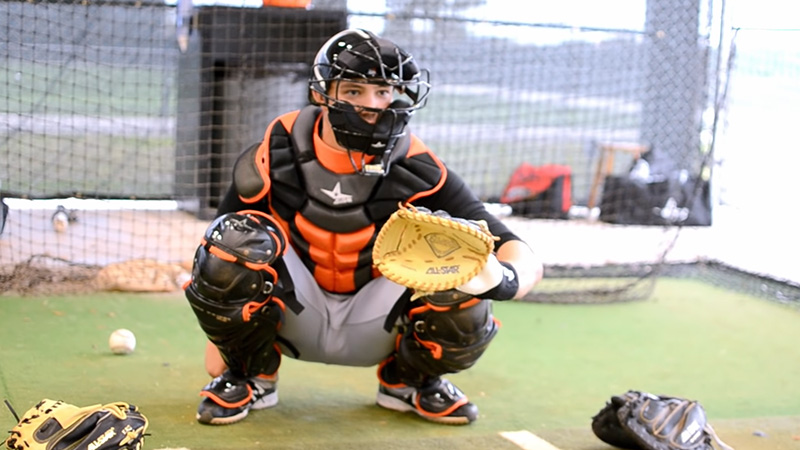
Breaking in a catcher’s glove involves manually working the glove to loosen up the leather and promote flexibility. Here are some manual techniques to help break in your glove effectively:
- Flexing and bending the glove: One of the primary methods is to flex and bend the glove in different directions. Gently apply pressure to the areas that need breaking in, such as the palm, pocket, and fingers. Flexing the glove helps to relax the leather and promote a natural shape that conforms to your hand.
- Squeezing and massaging the leather: Another technique is to squeeze and massage the leather of the glove. This helps to soften the material and make it more pliable. Focus on areas that feel stiff or rigid, working the leather with your hands to promote flexibility.
- Twisting and rotating the glove: Twisting and rotating the glove helps to break in the lacing and loosen up the leather. Hold the glove firmly and twist it in different directions, ensuring you cover the entire glove. This technique helps to reduce stiffness and promote a natural range of motion.
Focusing on the Palm, Pocket, and Key Areas That Need Breaking in
When breaking in a catcher’s glove, it’s important to pay extra attention to the palm, pocket, and key areas that require breaking in. These areas are crucial for secure ball retention and quick ball transfer. Here’s how to focus on each area:
- Palm: Work the palm of the glove by repeatedly closing and opening it. This repetitive motion helps to mold the leather to the shape of your hand, creating a comfortable and secure fit.
- Pocket: Concentrate on the pocket of the glove, which is where the ball is caught. Use your hand to repeatedly press and shape the pocket, encouraging it to form a natural and secure area for ball retention.
- Fingers: Flex and bend the fingers of the glove to promote flexibility and a natural curl. Pay attention to each finger individually, ensuring they can easily wrap around the ball.
Gradual Approach: The Importance of Patience During the Breaking-in Process
Breaking in a catcher’s glove requires patience and a gradual approach. Avoid rushing the process, as it can lead to damaging the glove or compromising its structural integrity. Here’s why a gradual approach is essential:
- Preserving the glove’s shape: Gradually working the glove allows the leather to adjust and mold naturally to your hand without distorting its shape. Rushing the process can result in a misshapen glove that affects performance and comfort.
- Preventing damage: Applying excessive force or aggressive techniques can cause damage to the glove, such as tearing or stretching the leather. Taking a patient approach ensures the longevity and durability of the glove.
- Allowing for proper break-in: Leather needs time to adjust and soften. By gradually breaking in the glove, you allow the leather to respond and adapt to your hand, resulting in a comfortable and well-fitting glove.
Remember to be patient throughout the breaking-in process, giving the glove time to adjust and mold to your hand. Regularly work the glove using the manual techniques mentioned, focusing on the palm, pocket, and key areas.
Step 5: Catching Balls to Shape the Pocket
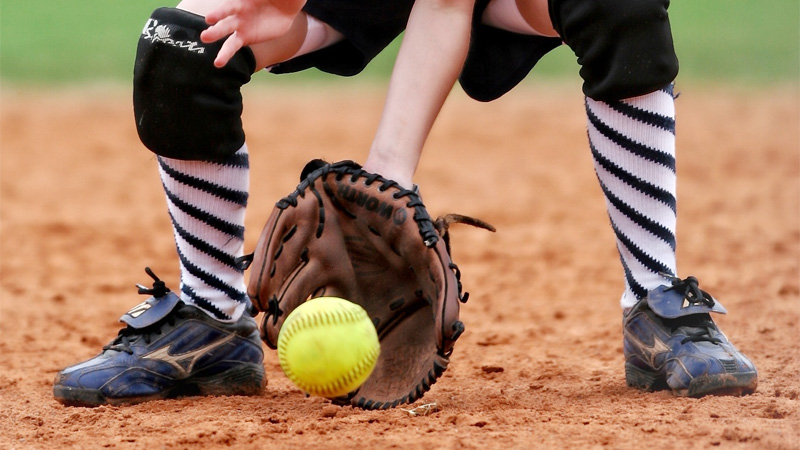
Once you have started breaking in your catcher’s glove manually, the next step is to catch balls to further shape the pocket and enhance its functionality. Here’s how to effectively catch balls to shape the pocket:
Initiating game-like scenarios with a partner: Find a throwing partner who can simulate game-like situations for you. Stand a suitable distance apart and begin playing catch with them.
This allows you to experience realistic throws and develop a feel for catching different types of pitches.
Gradually increase the intensity and velocity of throws: Start with slower, easier throws to get comfortable with the glove and build confidence.
As you progress, gradually increase the intensity and velocity of the throws to challenge yourself and the glove. This helps the pocket form a secure and reliable shape that accommodates different pitch speeds.
Step 6: Using of Glove in Practice Regularly
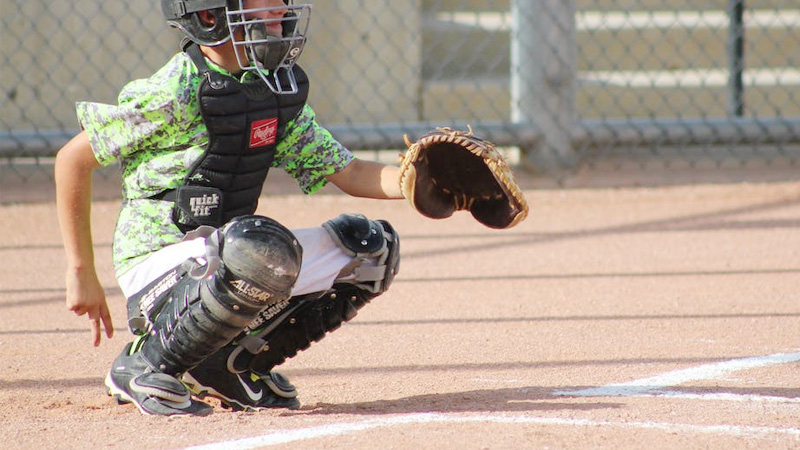
Incorporating your catcher’s glove into regular practice sessions is essential for maximizing its effectiveness. Here are some ways to use the glove during practice:
- Infield and outfield drills: During infield and outfield drills, use your catcher’s glove to receive throws from other players. Practice receiving and securing the ball with proper technique. This allows you to work on your hand-eye coordination and develop a strong connection between your glove and your throwing hand.
- Pitcher-catcher bullpen sessions: Participate in bullpen sessions with pitchers to practice receiving pitches. Work on framing pitches, giving clear targets, and building trust with the pitching staff. This helps familiarize the glove with different pitching styles and improves your ability to catch pitches effectively.
- Blocking and throwing exercises: Incorporate blocking drills and throwing exercises into your practice routine. These drills help refine your technique and ensure that the glove is properly broken in for blocking balls in the dirt and making accurate throws to different bases.
- Pop-up drills: Engage in pop-up drills where you track and catch fly balls. This allows you to practice judging the trajectory of the ball, positioning yourself correctly, and making clean catches with your catcher’s glove.
Maintaining proper form and technique during practice is crucial for optimal results. Focus on the following:
- Hand positioning: Keep your hands in the correct position while receiving throws or catching pitches. Ensure that the pocket of the glove is facing the incoming ball and that your other hand is ready to secure the ball.
- Follow-through: Maintain proper follow-through after catching the ball. This includes smoothly transitioning from the catch to the throwing motion or preparing for the next play.
- Consistency: Strive for consistency in your movements and technique. This allows the glove to become familiar with your motions and facilitates muscle memory development.
By incorporating your catcher’s glove into a variety of practice drills, you give it the opportunity to further mold to your hand and develop a reliable feel. Consistently practicing with the glove will enhance your performance and build confidence in your catching abilities.
Step 7: Taking Care of the Gloves
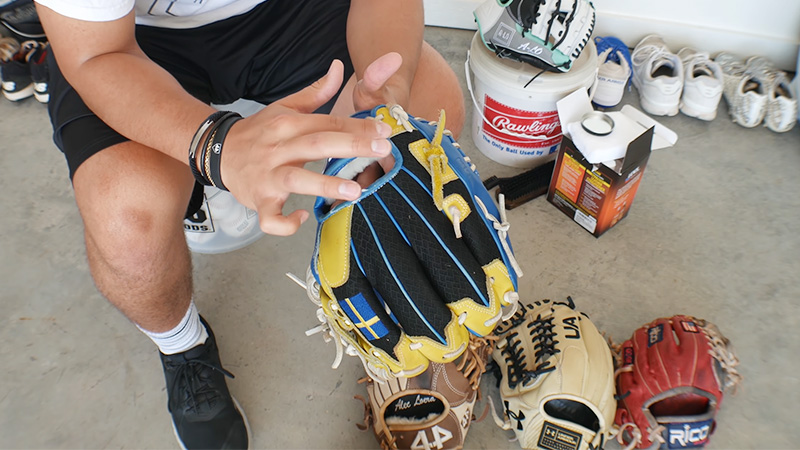
Proper care and maintenance are essential for prolonging the life of your catcher’s glove. Here are some important practices to follow:
Proper Care and Maintenance to Prolong the Life of the Glove
To ensure the longevity of your catcher’s glove, adopt these care and maintenance practices:
- Regular inspections: Periodically inspect your glove for any signs of wear and tear. Check the lacing, webbing, and overall condition of the glove. Address any minor issues promptly to prevent them from becoming more significant problems.
- Conditioning: Continue to condition your glove throughout its lifespan. Apply glove conditioner or oil as recommended by the manufacturer. This helps keep the leather soft, supple, and resistant to drying out or cracking.
Cleaning the Glove After Each Use to Remove Dirt and Sweat
After each use, it’s important to clean your catcher’s glove to remove dirt, sweat, and other debris that may accumulate. Follow these steps to effectively clean your glove:
- Remove excess dirt: Use a soft cloth or brush to gently remove any dirt or debris from the surface of the glove. Pay attention to crevices, laces, and the webbing.
- Spot cleaning: For more stubborn stains or dirt, lightly dampen a cloth with mild soap and water. Gently rub the affected areas to remove the dirt, taking care not to soak the leather excessively. Avoid using harsh chemicals or abrasive cleaners that can damage the glove.
- Drying: After cleaning, allow the glove to air dry naturally. Avoid using heat sources such as direct sunlight, radiators, or hair dryers, as excessive heat can cause the leather to become brittle or warp.
Storing the Glove in a Cool, Dry Place to Prevent Damage
Proper storage is essential for maintaining the integrity of your catcher’s glove. Follow these guidelines to store your glove effectively:
- Cool and dry environment: Store your glove in a cool, dry place to prevent mold, mildew, or moisture damage. Avoid storing it in a damp basement or a hot, humid area.
- Avoid extreme temperatures: Do not expose your glove to extreme temperatures, such as leaving it in a car on a hot day or in freezing conditions. Extreme heat can cause the leather to dry out and crack, while extreme cold can make it stiff and less pliable.
- Use a glove bag or wrap: Consider using a glove bag or wrapping your glove in a soft cloth to protect it from dust and potential impacts when storing it. This helps maintain its shape and keeps it in good condition.
By following proper care and maintenance practices, including regular inspections, cleaning after each use, and storing the glove in a suitable environment, you can extend the life of your catcher’s glove and ensure optimal performance on the field.
Maintenance Guidelines for Catcher’s Glove
Maintenance Step | Description |
Regular inspections | Periodically check the lacing, webbing, and overall condition of the glove. |
Conditioning | Apply glove conditioner or oil as recommended to keep the leather supple. |
Cleaning after each use | Remove dirt and sweat using a soft cloth or mild soap and water. |
Drying | Allow the glove to air dry naturally, avoiding heat sources. |
Proper storage | Store the glove in a cool, dry place to prevent moisture damage. |
Use of a glove bag or wrap | Protect the glove from dust and potential impacts during storage. |
FAQs
How often should I inspect my catcher’s glove?
It is recommended to inspect your catcher’s glove at least once every few weeks during the season. Additionally, perform a thorough inspection before the start of each season to identify any potential issues that may need attention.
Can I use regular leather conditioner or oil on my catcher’s glove?
It is best to use glove-specific conditioners or oils designed for baseball gloves. These products are formulated to maintain the integrity of the leather without causing damage. Avoid using household or generic leather conditioners, as they may contain ingredients that could harm the glove’s performance.
Should I clean my catcher’s glove after every game or practice?
While it is not necessary to clean your glove after every game or practice, it is a good practice to wipe it down with a soft cloth to remove any excess dirt or sweat. Regular cleaning helps prevent buildup and maintains the glove’s appearance.
Can I speed up the drying process by using a hairdryer or placing the glove near a heat source?
No, it is not recommended to use heat sources such as hairdryers, radiators, or direct sunlight to dry your catcher’s glove. Excessive heat can cause the leather to become brittle, lose its natural oils, and potentially warp or crack.
Should I store my catcher’s glove in the glove bag or wrap it in a soft cloth?
Both options are suitable for storing your glove. A glove bag provides added protection from dust and potential impacts, while wrapping the glove in a soft cloth can also offer a layer of safeguarding. Choose the option that best suits your preference and storage space.
Conclusion
Properly maintaining your catcher’s glove is essential for maximizing its lifespan and optimizing its performance on the field.
By following the maintenance guidelines discussed, including regular inspections, conditioning, cleaning, drying, and proper storage, you can ensure that your glove remains in excellent condition.
Incorporating the glove into practice sessions and using it in various drills helps further mold it to your hand and develop a reliable feel. By maintaining proper form and technique during practice, you can enhance your catching abilities and build confidence in your performance.
Remember to be patient during the breaking-in process and allow the glove to gradually adjust to your hand. Thank you for your time.

